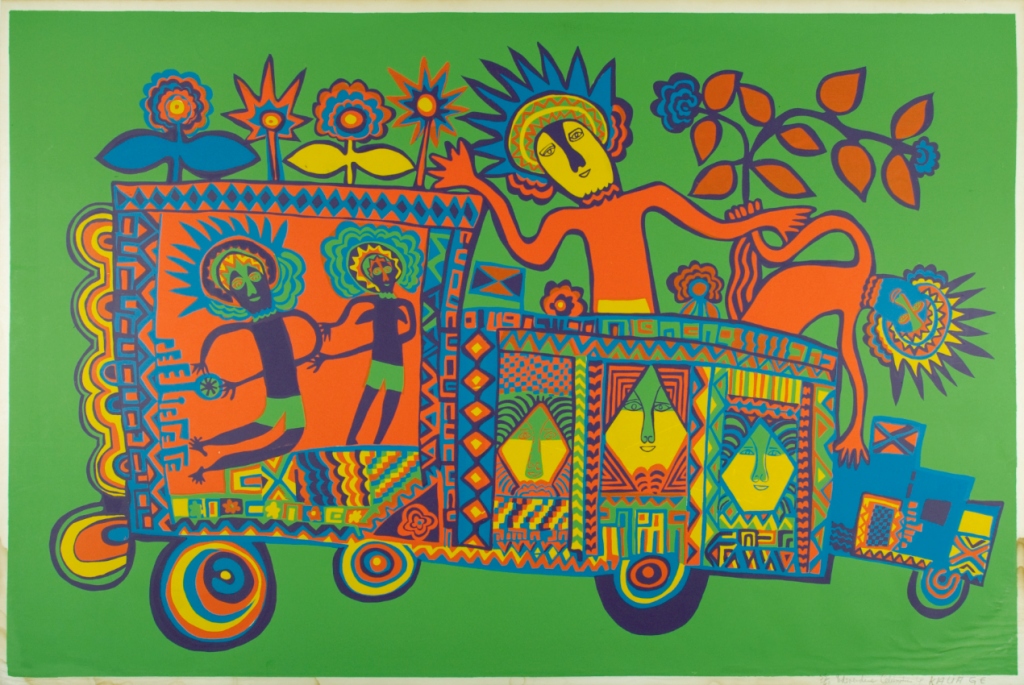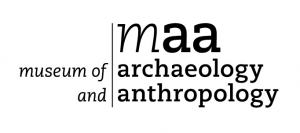Modernists & Mentors
Indigeous and Colonial Artistic Exchanges
7 November 2013
Cambridge, England
The symposium ‘Modernists and Mentors: Indigenous and Colonial Artistic Exchanges’ will focus on the productive but complex relationships and exchanges that took place during the twentieth century between Indigenous and colonized artists and Western artists, mentors and art forms. These exchanges resulted from encounters that took place in many different moments and locations, from small settlements in the Canadian Arctic, the central Australian desert and islands in the Pacific, to art schools in Paris, Dakar, and Khartoum, and large cities in Nigeria or South Africa.
9:30 am Introduction: Nicholas Thomas & Ruth B. Phillips
9:45 am Ruth B. Phillips: Modes of Ancestor Worship in Settler Societies:
The Primitive, the Modern, and the Global Genesis of Twentieth-Century Indigenous Arts
10:30 am Damian Skinner: The Educator and the Carver: Identifying the Mentors of Māori Modernism
11:15 am Coffee and tea break
11:30 am Sandra Klopper: The Art of Laughter: Alson Zuma’s reinvention of works in the collection of David Fox
12:15 am Peter Brunt: The politics of friendship: The painter, the photographer and the tatooist
1 pm Lunch
2 pm Chika Okeke-Agulu: Ulli Beier, Demas Nwoko and Uche Okeke and the problem of Postcolonial Modernism
2:45 pm Ian McLean (co-authored by Nigel Lendon): Crosstown traffic: The Aboriginal Memorial (1988)
3:30 pm Coffee and tea break
3:45 pm In Conversation: Elizabeth Harney & Atta Kwami
4:30 pm Panel Discussion:Chaired by Bill Anthes
Peter Brunt: The politics of friendship: The painter, the photographer and the tattooist
In 1978, two Pakeha artists, Tony Fomison and Mark Adams, met and befriended the Samoan tattooist Su’a Sulu’ape Paulo II. Each man enjoyed some reputation in his own milieu, Fomison and Adams as a painter and photographer respectively in the New Zealand art world, and Paulo as a tattooist among migrant Samoans in the suburbs of Auckland. Each man was confident in his practice and direction as an artist. And each wanted and got something from the other: Adams found entrée into an entire subculture of tattooing among urban migrant Samoans, which he documented in a remarkable series of photographs; Fomison got tattooed by Sulu’ape with a traditional Samoan pe’a (male body tattoo) between 1979 and 1980; and Paulo achieved a public visibility in New Zealand society – and subsequently in Europe and other parts of Polynesia as well – that would transform his role as a tattooist, as he would transform the tradition he practiced. Who ‘mentored’ who in this trio of artists? What investments and desires played out across the colonial and cultural divide that separated and joined them in an era aspiring to decolonise? In what sense were they modernists? Is Indigenous modernism only about the uptake of Western art forms in historically Western institutions and discourses (like art galleries and art history)? Or is it also the name of something that occurs in Indigenous art traditions and societies in specific conditions of modernity? This paper will explore these questions in a comparative examination of the painter, the photographer and the tattooist.
In Conversation: Elizabeth Harney and Atta Kwami
A discussion with acclaimed visual artist Atta Kwami about his work on the art worlds of Kumasi, where local modernisms flourished simultaneously in art academies and in street workshops, across art and craft divides, and between mentors and artists within global networks of exchange.
Sandra Klopper: The Art of Laughter: Alson Zuma’s reinvention of works in the collection of David Fox
In this paper I explore the creative partnership between Alson Zuma and David Fox, a farmer and Consul for Madagascar who established a private museum at Fort Nottingham in the Natal Midlands, where he first met Zuma as a young, rural labourer and aspirant artist in the early 1990s. My primary aim is to examine both how and why Zuma re-imagined the artistic models to which Fox introduced him, and how their shared sense of the absurd encouraged the artist to cultivate his own quirky humour in the production of carved narrative panels that are often satirical, but also didactic. Delighting in the opportunities afforded by drawing on different, sometimes competing epistemology, Zuma pokes fun at both the hubris and gullibility of people. In doing so, he celebrates but also transcends the artistic models that shaped his work.
Ian McLean (co-author Nigel Lendon): Crosstown traffic: The Aboriginal Memorial (1988)
First exhibited at the 1988 Sydney Biennale of contemporary art, The Aboriginal Memorial is an installation of two hundred upright wooden cylinders in fact hollowed logs or Yolngu bone coffins one pole for every year of colonization. Acclaimed at the time as a masterpiece of contemporary art and acquired by the National Gallery of Australia, it is unusual in having 43 acknowledged artists representing the different Yolngu clans from the Ramingining area in central Arnhem Land. The work presents many difficulties to the existing paradigms of Indigenous and contemporary art, the least of which is the significant and rarely acknowledged role of the art co-ordinator at this remote Aboriginal art centre at the time, Djon Mundine. This paper will unpack these difficulties with the aim of developing an alternative intercultural paradigm.
Chika Okeke-Agulu: Ulli Beier, Demas Nwoko and Uche Okeke and the problem of Postcolonial Modernism
The paper considers the work of Ulli Beier who, as curator of the Mbari Artists and Writers Club Gallery, Ibadan, and as art critic for the Black Orpheus magazine and other journals, promoted the early work of African postcolonial modernists, including Demas Nwoko and Uche Okeke (Nigeria), Ibrahim El Salahi and Mohamed Shibrain (Sudan), Malangatana Ngwenya (Mozambique), Vincent Kofi (Ghana), among others. With the example of his critical relationship with the work of Okeke and Nwoko, I argue that while for the most part, Beier productively understood the task the artists had set for themselves, which is to articulate the artistic conditions of political sovereignty, he also misrecognized the artists’ differential stylistic and discursive engagement with “traditional art” and national culture as a crucial part of articulating their modernist subjectivity.
Damian Skinner: The Educator and the Carver: Identifying the Mentors of Māori Modernism
Sometimes known as the ‘Tovey generation’, modernist Māori artists in the 1950s and 1960s are notable for their relationship to Gordon Tovey, Supervisor Arts and Crafts for the Department of Education. Responsible for implementing wide-ranging reforms in the New Zealand school system, Tovey was also behind the arts advisor scheme that employed almost all the Māori modernists. A Pākehā (European New Zealander), Tovey acted a patron, a connection to international modernist movements, and through his ideas about the role of Māori art in the classroom, a key factor in Māori modernism’s reinterpretation of customary Māori art into a form of indigenous primitivism. Māori master carver Pine Taiapa is the other notable mentor of Māori modernism. Part of the ‘revival’ of Māori art under the auspices of politician and cultural leader Āpirana Ngata in the first half of the twentieth century, Taiapa is often identified as the key broker between customary art and the modernism of the post-war generation. By locating Tovey and Taiapa as the mentors of Māori modernism, the diverse sources and political agendas of indigenous modernism in Aotearoa New Zealand become visible.
Ruth B. Phillips: Modes of Ancestor Worship in Settler Societies:
The Primitive, the Modern, and the Global Genesis of Twentieth-Century Indigenous Arts
This paper argues for the agency of aesthetic primitivism in the genesis of global indigenous modernisms. The powerful deconstructive project of the past few decades has caused us to lose sight of the historical role played by a network of mentors– teachers, patrons, gallerists and fellow artists– who were motivated by their love of ‘primitive art’ to engage with the contemporary arts of colonized peoples. It also argues that aesthetic primitivism, combined with settler projects of decolonization in Australia, the United States, Canada and elsewhere led to primitivist appropriations of indigenous art inflected with distinctive forms of ‘ancestor worship.’ The mutual engagements of settler and indigenous artists could also, however, prove mutually transformative, leading Indigenous artists to selectively appropriate and transform Western modernisms, and mentor figures to revise primitivist definitions of authenticity and recognize the co-modernity of Indigenous artists.


